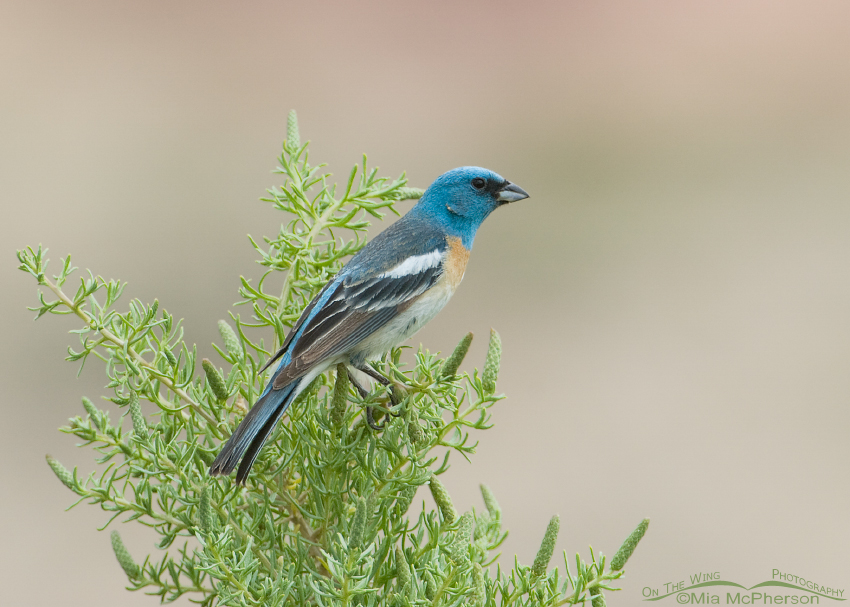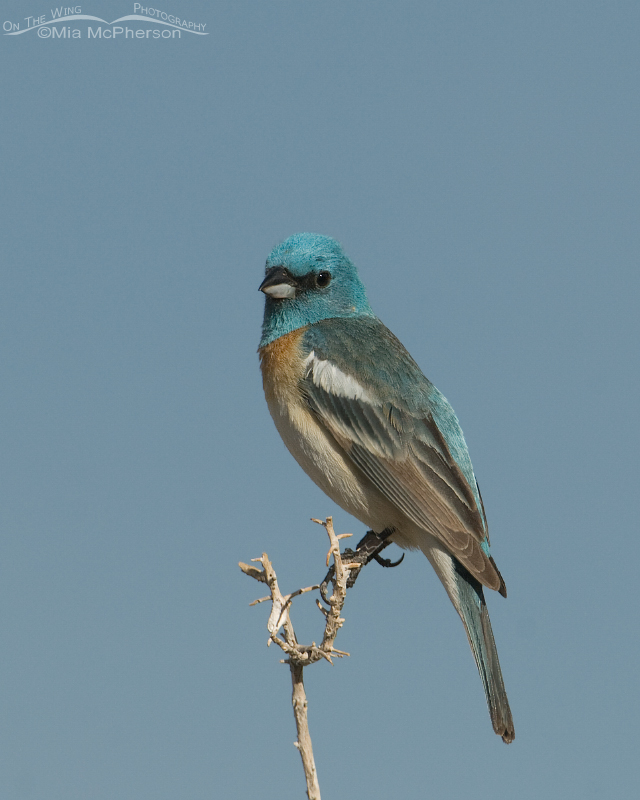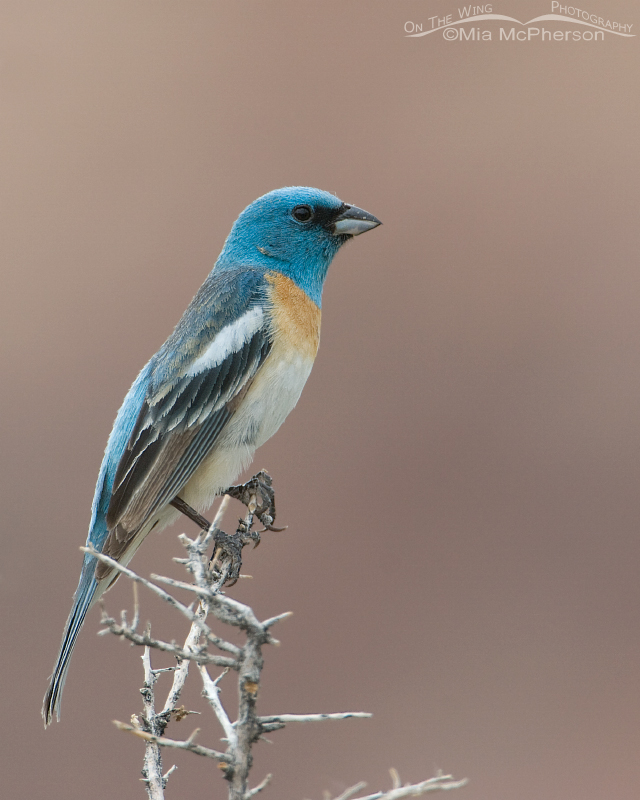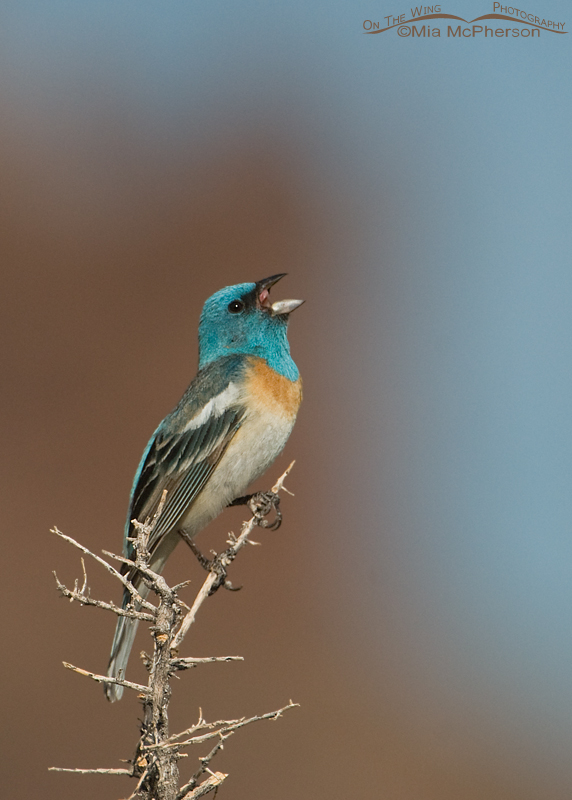 Lazuli Bunting male perched on Greasewood – D200, f7.1, 1/500, ISO 400, +0.3 EV, 200-400mm VR with 1.4x TC at 400mm, natural light
Lazuli Bunting male perched on Greasewood – D200, f7.1, 1/500, ISO 400, +0.3 EV, 200-400mm VR with 1.4x TC at 400mm, natural light
In June of 2010 I went camping in the San Rafael Swell area of Utah and I was fortunate to find quite a few Lazuli Buntings in the areas near the campgrounds. The females did not seem to be present but their more subtle coloring does camouflage them well and I may have missed spotting them. The males; however, were present and singing atop shrubs and bushes.
This male Lazuli Bunting was perched on a Greasewood shrub near the campgrounds by the river. The name of this species comes from Lapis Lazuli, a blue semiprecious blue gemstone. Lapis Lazuli is one of my favorite gemstones to work with when fashioning jewelry and it goes great with blue jeans.
 Lazuli Bunting with sky in the background – D200, f8, 1/1000, ISO 250, 200-400mm VR with 1.4x TC at 400mm, natural light
Lazuli Bunting with sky in the background – D200, f8, 1/1000, ISO 250, 200-400mm VR with 1.4x TC at 400mm, natural light
Male Lazuli Buntings resemble bluebirds but they are smaller and the blues are a different hue than the Mountain, Eastern and Western Bluebirds. Lazuli Buntings occur in open, disturbed habitats, thickets and along waterways. They winter from southern Arizona down to southwestern Mexico.
 Lazuli Bunting male with Navajo and Entrada sandstone in the background – D200, f8, 1/1000, ISO 250, 200-400mm VR with 1.4x TC at 400mm, natural light
Lazuli Bunting male with Navajo and Entrada sandstone in the background – D200, f8, 1/1000, ISO 250, 200-400mm VR with 1.4x TC at 400mm, natural light
The San Rafael Swell area has abundant formations of Navajo and Entrada sandstone which provides beautiful backgrounds that compliment the Lazuli Buntings coloration. They also have a habit of perching high on top of bushes which helps to give clear views of this species when photographing.
 Male Lazuli Bunting singing with canyon walls in the background – D200, f8, 1/1000, ISO 250, 200-400mm VR with 1.4x TC at 400mm, -0.3 EV, natural light
Male Lazuli Bunting singing with canyon walls in the background – D200, f8, 1/1000, ISO 250, 200-400mm VR with 1.4x TC at 400mm, -0.3 EV, natural light
It seemed that the buntings were the most active early in the morning and late afternoon, this image was taken in late afternoon light while the male Lazuli Bunting was singing, the sweet calls bouncing off of the canyon walls. I hope that next year I’ll have many more opportunities with this colorful species.
Life is good.
Mia
Click here to see more of my Lazuli Bunting photos plus facts and information about this species.


I really enjoy the last photo in your series on the Bunting. Last night my wife and I reviewed your website together ( she on her laptop and me on mine ). The review was an hour and a half of mutual enjoyment. It was like a treasure hunt, as each one of us differnent trips through the website, we would tell the other to “hey look at this”. Your provided us with a wonderful evening.
My wife reads the comments on my postings on NPN, especially yours, and now she is becoming a knowledgable critc. We will continue to visit your website together.
Thanks
Harry